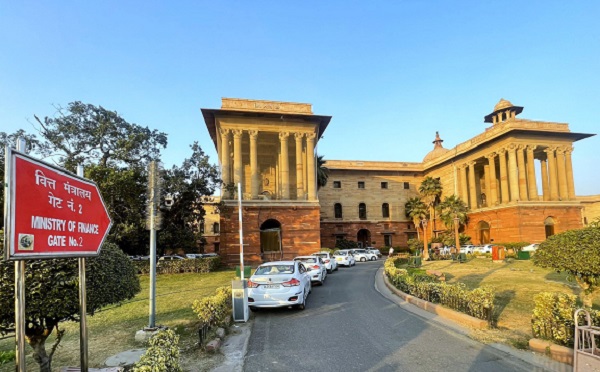.png)

Kalyan Ram, a financial journalist, co-founded Cogencis and now leads BasisPoint Insight.
August 14, 2025 at 3:20 PM IST
India’s rating upgrade to BBB by S&P Global Ratings is more than a symbolic nod from global markets. It marks the culmination of a deliberate, politically costly choice to keep the nation’s finances disciplined, even when growth imperatives suggested a looser hand. This puritan fiscal stance secured credibility, cut the sovereign cost of capital, and strengthened India’s investment case.
It was a long game worth playing.
The fiscal path in recent years has been marked by restraint. Spending growth was measured, subsidies were contained, welfare was targeted, and capital expenditure was prioritised without deviating from the deficit glide path. S&P acknowledged that this discipline had materially strengthened India’s fiscal profile, reducing the general government debt-to-GDP ratio and improving the sovereign’s resilience to shocks. It noted that this was underpinned by a track record of structural reforms, a dynamic private sector, and consistent infrastructure investment.
Even at the height of the pandemic, India’s stimulus was modest by global standards, focusing on targeted interventions and balance sheet repair rather than blanket cash transfers. The signal to investors and rating agencies was clear: stability would not be sacrificed for short-term gains.
The fiscal deficit expanded to 9.2% of GDP in 2020-21, partly due to off-budget items above the line.
The sovereign rating upgrade brings a tangible reduction in borrowing costs for the government, corporates, and infrastructure projects. It widens the pool of global investors, lowers hurdle rates for long-term investments, and strengthens India’s ability to fund its growth ambitions.
Over time, these shifts can reshape the economy’s productive base and competitiveness.
But fiscal virtue has its trade-offs. The Reserve Bank of India became the primary driver of demand support, cutting rates, adding liquidity, and facilitating credit to keep the recovery alive. While monetary policy can smooth cycles, it is not a substitute for fiscal demand when private investment is hesitant or household consumption flattens. As a result, growth over the past few years has been steady rather than spectacular.
Fiscal policy has been a drag on growth, and cracks have started to appear.
Global Headwinds
High-frequency indicators suggest tax revenue growth is slowing, hinting at softer revenue buoyancy ahead. At the same time, the global climate is turning more hostile. In a jolt to India’s trade strategy, President Donald Trump has announced 50% tariffs on Indian goods. For export-oriented sectors, this is an immediate hit to competitiveness, profitability, and potentially employment.
India’s initial reaction has been measured, but global realpolitik leaves little space for passivity. Protectionism is resurgent, and trade policy is increasingly wielded as a strategic tool. For an economy still working to deepen its integration into global value chains, such shocks are not just sectoral, they can ripple into broader growth and investment sentiment.
The priority now must be to pivot from consolidation to protection and support. Having secured credibility and lowered the cost of capital, the government has room to use fiscal policy to defend growth without undermining the ratings gain. The task is twofold: cushion industries hit by tariffs and counter a potential demand slowdown. This could mean enhanced export credit, incentives for technology upgrades in affected sectors, and accelerated infrastructure spending to lift logistics efficiency and competitiveness.
S&P projected that India would remain one of the fastest-growing major economies globally over the medium term, but stressed that sustaining this momentum would require continued infrastructure spending, reforms to boost labour participation, and strengthening the financial sector’s ability to support growth.
Such measures should be sharp, targeted, and time-bound. They must also be embedded within a credible medium-term consolidation plan to assure markets and rating agencies that the pivot is tactical, not a return to profligacy. A ratings upgrade is durable when investors see a government willing to respond decisively to shocks without abandoning discipline.
The risk of inaction is greater than the risk of a measured fiscal expansion. If export sectors lose capacity or shed jobs, the spillovers into consumption and private investment could undermine the broader growth story. With private capital still cautious, the government must take the lead in providing counter-cyclical support. This is not about undoing years of discipline; it is about using that discipline as a platform to act from strength.
The political economy also points in favour of such a pivot. India’s fiscal consolidation was never meant to be austerity for its own sake. It was designed to build stability as a foundation for sustained growth. That goal remains intact. But stability is dynamic, and it demands adaptation when circumstances change.
India’s BBB rating is a hard-earned credential. The next challenge is to ensure that the credibility dividend is not wasted. The cost-of-capital advantage must be channelled to keep exports competitive, demand resilient, and investment momentum alive in the face of global headwinds. Fiscal virtue has served its purpose. Now it must evolve into strategic support for growth.




